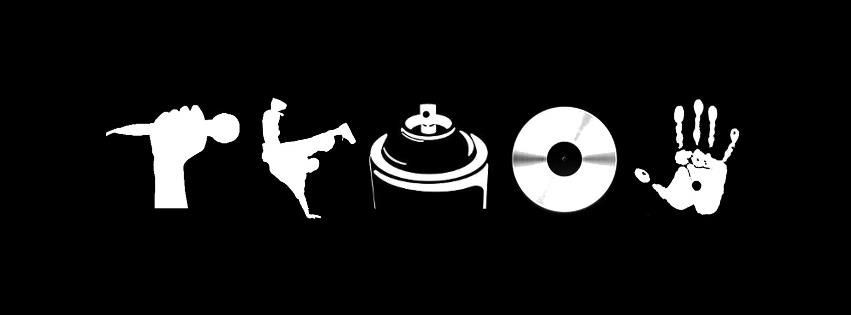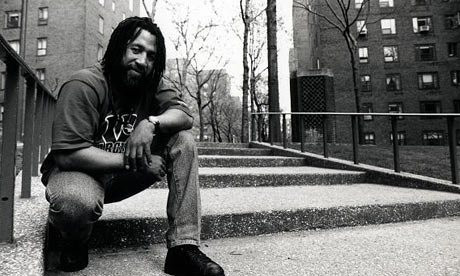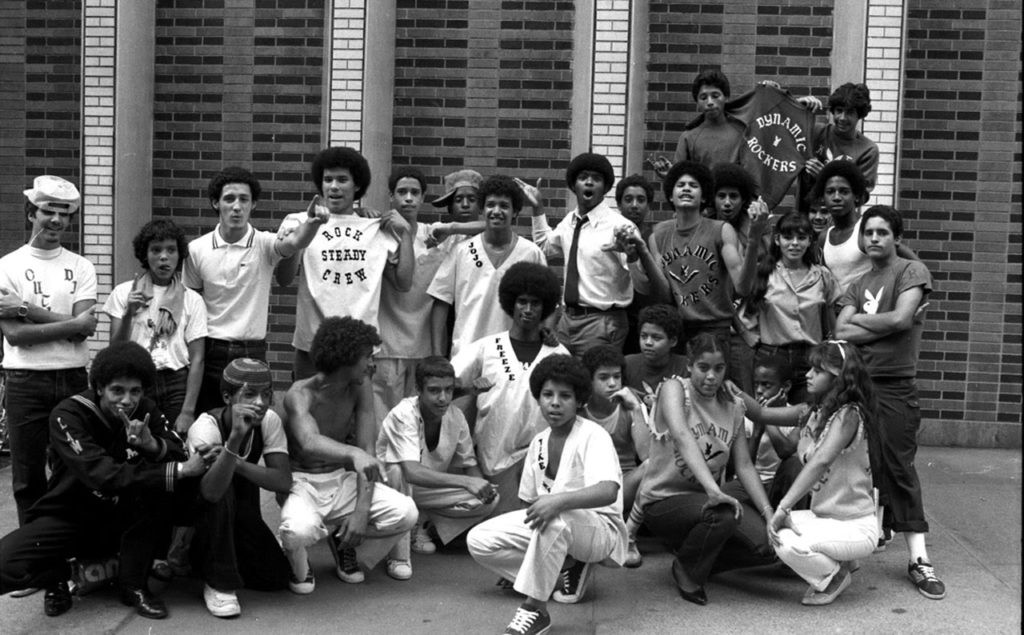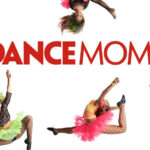Hip Hop dance is a vibrant and dynamic form of movement deeply rooted in African American culture, originating in the 1970s in New York City. At ten-dance.com, we break down this energetic style, characterized by its bounces, rocks, and grooves, making it accessible and fun for everyone. Explore the rich history, diverse styles, and the cultural significance of Hip Hop dance with us, and discover how it has evolved into a global phenomenon, influencing music, fashion, and art. Join ten-dance.com to learn about hip hop culture, dance classes, and choreography today.
1. What Exactly is Hip Hop Dance?
Hip Hop dance is more than just a series of steps; it’s a cultural expression born from the streets of 1970s New York. Characterized by rhythmic movements, bounces, and rocks performed to Hip Hop music, it’s a style deeply embedded in African American and Latino communities. It’s important to understand that Hip Hop dance is a key element of a larger Hip Hop culture, which includes DJing, rapping (MCing), graffiti art, and breaking.
1.1 What are the key characteristics of Hip Hop Dance?
Hip Hop dance is marked by several distinctive features:
- Rhythmic Movement: It relies on a strong sense of rhythm and musicality.
- Improvisation: Freedom of expression is highly valued.
- Grooves: Characterized by bounces, rocks, and fluid movements.
- Cultural Connection: It reflects the experiences and stories of its community.
1.2 How does Hip Hop Dance differ from other dance genres?
Unlike structured dance forms such as ballet or ballroom, Hip Hop emphasizes individuality and improvisation. While other dance genres might focus on precise techniques and codified steps, Hip Hop celebrates personal style and interpretation.
2. What are the 5 Essential Elements of Hip Hop Culture?
Hip Hop culture is built upon five core elements, each contributing to its rich tapestry: DJing, MCing, Graffiti, Breaking, and Knowledge. Understanding these elements provides a comprehensive view of Hip Hop’s origins and evolution.
2.1 How does DJing contribute to Hip Hop Culture?
Deejaying, or turntablism, is the art of creating music in real-time using record players and DJ mixers. Hip Hop DJs are the musical architects of the culture, responsible for crafting the sounds that drive dancers and energize parties.
2.2 What role does MCing play in Hip Hop?
MCing, or emceeing (Master of Ceremonies), involves rapping and vocal performance. MCs hype up the crowd, often freestyling over the DJ’s music, adding layers of rhythm and lyrical content to the overall experience.
2.3 What is the significance of Graffiti in Hip Hop Culture?
Graffiti is the visual art form of Hip Hop, using spray paint to express thoughts, stories, and emotions on walls and public spaces. It’s a form of self-expression and a visual representation of the culture’s voice.
2.4 Why is Breaking considered a foundational element of Hip Hop?
Breaking, often called “breakdancing” by the media, is the original dance style of Hip Hop. It encompasses four primary movements: toprock, downrock, power moves, and freezes, showcasing athleticism and creativity.
2.5 How does Knowledge tie all the elements together?
Knowledge acts as the binding force of Hip Hop, emphasizing self-awareness, cultural consciousness, and empowerment. It encourages members of oppressed communities to drive social change and give back, enriching the culture with depth and purpose.
 The 5 elements of hip hop
The 5 elements of hip hop
3. Tracing the Historical Roots of Hip Hop Culture
Hip Hop emerged in the 1970s in the Bronx, a borough marked by poverty, crime, and gang violence. In response to these harsh conditions, African American and Latino youth created art forms as a means of expression and escape.
3.1 How did the Bronx in the 1970s influence Hip Hop’s development?
The Bronx’s challenging environment fueled the need for creative outlets. Hip Hop became a lifestyle, embodying how youth dressed, spoke, and moved.
3.2 What does KRS-One say about the meaning of “Hip Hop?”
According to KRS-One, “Hip” means “present” and “Hop” means “action.” Hip Hop, therefore, signifies a movement representing the freedom to learn, grow, and evolve.
3.3 How did Hip Hop offer a positive alternative to violence and drugs?
Hip Hop provided an avenue for positive expression, channeling energy into originality, creativity, identity, respect, and community. It transformed struggle into art.
3.4 Who is DJ Kool Herc and why is he considered the “Father of Hip Hop?”
DJ Kool Herc, known as the “Father of Hip Hop,” started block parties in the West Bronx. He used turntables to play music, creating a space for the community to come together and dance.
3.5 What innovations did Grandmaster Flash bring to DJing?
Grandmaster Flash advanced DJing techniques by using headphones to pinpoint the start and end of beats, enabling seamless transitions.
4. What are the Distinct Types of Hip Hop Dance?
Hip Hop dance encompasses several styles, with breaking and party dances being the most prominent. Each style offers a unique form of expression and physicality.
4.1 What are the defining characteristics of Breaking?
Breaking, popularized as “breakdancing,” is an athletic dance style featuring battles and displays of skill. It originated at Hip Hop block parties and emphasizes techniques such as footwork, freezes, power moves, and toprocks.
4.2 How did DJ Kool Herc contribute to the origins of Breaking?
DJ Kool Herc named the dancers “b-boys” and “b-girls” because they danced to his breakbeats.
4.3 What cultural influences shaped Breaking’s development?
Early b-boys and b-girls integrated various dance forms, including salsa, Cuban mambo, rumba, Brazilian samba, jazz dance, Kung-Fu, and Capoeira, adding layers of complexity and creativity to Breaking.
4.4 How did Breaking provide a sense of identity and purpose?
Through battles, dancers gained pride, respect, and a sense of belonging. Dance became a means of asserting themselves, replacing violence with art.
4.5 What are Hip Hop Party Dances and how did they evolve?
Hip Hop party dances emerged as a social, light-hearted alternative to the demanding athleticism of Breaking. With figures like Buddha Stretch, party dances such as the Snake, Chicken-head, Cabbage Patch, Harlem Shake, and Running Man became popular.
4.6 What are some examples of “new school” Hip Hop party dances?
As Hip Hop music evolved, new school party dances like the Whip, Nae Nae, Dougie, and Cat Daddy emerged, reflecting contemporary sounds and rhythms.
 hip hop dj kool herc posing
hip hop dj kool herc posing
5. Are Popping, Locking, and House considered Hip Hop Styles?
While often associated with Hip Hop, styles like Popping, Locking, and House are distinct dance forms with their own techniques, vocabularies, and origins. It’s essential to recognize their unique contributions to the broader dance landscape.
5.1 Why is it important to differentiate these styles from Hip Hop?
Grouping these styles under the Hip Hop umbrella can dilute their individual identities and historical contexts. Each style has its own rich history and set of movements that deserve recognition.
5.2 What are “West Coast Funk” styles?
Social dances developed in the 1980s like Locking and Popping are more accurately described as “West Coast Funk” styles.
6. How Has Media Representation Shaped Hip Hop Dance?
Hip Hop gained media attention in the early 1980s through films like Wild Style, Style Wars, Beat Street, and Breakin’, which introduced Breaking and street dance culture to a broader audience.
6.1 What impact did films like Wild Style and Breakin’ have on Hip Hop’s popularity?
These films played a crucial role in popularizing Breaking and street dance, introducing the culture to a wider audience.
6.2 How did the battle between Rock Steady Crew and the Dynamic Rockers impact mainstream awareness?
The battle between Rock Steady Crew and the Dynamic Rockers at the Lincoln Center in 1981 gained national attention, covered by New York Publications and National Geographic.
6.3 What role did Soul Train play in popularizing Hip Hop social dancing?
Soul Train, created by Don Cornelius, popularized Hip Hop social dancing, along with Popping, Locking, and other styles, reaching a diverse audience.
6.4 How did commercialization affect Hip Hop’s authenticity?
While Hip Hop dancers gained exposure through commercials and media appearances, the style was often diluted and commercialized. This compromised the authenticity and socioeconomic roots of the culture.
6.5 How have modern shows influenced perceptions of Hip Hop dance?
Shows like America’s Best Dance Crew, Dancing With The Stars, So You Think You Can Dance, and movies like Save The Last Dance, You Got Served, and the Step Up series further popularized street style movement, but often presented a watered-down version of underground Hip Hop culture.
6.6 How are organizations working to preserve Hip Hop culture?
Dance organizations and community groups are working to reverse appropriation by practicing, teaching, and preserving Hip Hop culture in its purest form.
7. How Can I Find Authentic Hip Hop Dance Classes?
Finding authentic Hip Hop dance classes can be challenging, particularly in areas where the culture hasn’t taken root. However, there are several ways to identify and engage with genuine Hip Hop dance education.
7.1 How can I start learning Hip Hop dance on my own?
Begin by building your knowledge of Hip Hop culture. Understanding the history and context will enhance your appreciation and skills.
7.2 What should I look for when searching for Hip Hop dance classes?
Look for classes that emphasize foundational grooves, cultural history, and classic Hip Hop moves. Check studio websites and social media for videos and descriptions that align with authentic Hip Hop.
7.3 What questions should I ask when researching instructors?
Research the instructor’s background. Do they participate in the wider Hip Hop community? Do they discuss the culture and history? Their approach should reflect a deep understanding and respect for Hip Hop’s origins.
7.4 What classic moves and terms should I look for in class descriptions?
Look for terms like “bounces and rocks,” “old school,” or “new school” dance moves, and ensure that the classes are truly Hip Hop, not a mix of styles artificially labeled.
7.5 What are the benefits of online Hip Hop dance classes?
If you can’t find local classes or prefer learning at home, online platforms like ten-dance.com offer authentically taught classes and programs. These resources provide a convenient way to learn from experienced instructors.
 elite force dance crew
elite force dance crew
8. Why Choose Ten-Dance.com for Hip Hop Dance Education?
Ten-dance.com is committed to providing authentic Hip Hop dance education through expert-led classes and a deep respect for the culture’s roots. Our platform ensures that dancers of all levels can access quality instruction and connect with the Hip Hop community.
8.1 What makes ten-dance.com unique?
At ten-dance.com, we prioritize cultural accuracy and high-quality instruction, ensuring that our students receive an authentic Hip Hop experience.
8.2 Who are the instructors at ten-dance.com?
Our instructors are experienced Hip Hop dancers and educators dedicated to preserving and sharing the true essence of Hip Hop dance.
8.3 What types of Hip Hop dance classes are offered on ten-dance.com?
We offer a variety of classes, from beginner to advanced levels, covering breaking, party dances, and foundational Hip Hop techniques.
8.4 How does ten-dance.com support the Hip Hop community?
Ten-dance.com actively engages with and supports the Hip Hop community by promoting authentic education, featuring respected dancers, and fostering a space for cultural exchange.
8.5 Can I find other dance styles besides Hip Hop on ten-dance.com?
Yes, ten-dance.com offers a wide range of dance styles, including Popping, Locking, House, and more, each taught by experienced instructors who respect and preserve the unique cultural heritage of their respective dance forms.
9. What is the Meaning of Hip Hop dance to the Team at Ten-Dance.com?
As dance educators, we at ten-dance.com are dedicated to preserving and sharing accurate information about dance cultures, especially with the younger generation.
9.1 What principles guide ten-dance.com’s approach to dance education?
We ensure that our programs:
- Feature dancers/teachers who are respected ambassadors of each dance culture.
- Include history as a part of teaching the dance moves (because the moves came from the history).
9.2 How can I get involved with ten-dance.com?
Explore our Hip Hop classes and other dance styles on ten-dance.com. Contact us with any questions or feedback, as we are always learning and growing together. Our address is 60 Lincoln Center Plaza, New York, NY 10023, United States. You can call us at +1 (212) 769-7000. Visit our website ten-dance.com for more details.
10. FAQs About Hip Hop Dance
10.1 What are the basic elements of Hip Hop dance?
The basic elements include bounces, rocks, grooves, and improvisation, all synchronized to Hip Hop music.
10.2 Is Hip Hop dance suitable for beginners?
Yes, Hip Hop dance is accessible to beginners. Start with foundational moves and gradually progress to more complex steps.
10.3 What kind of music is used for Hip Hop dance?
Hip Hop dance uses a variety of Hip Hop music, including old school beats, rap, and R&B tracks.
10.4 Can I learn Hip Hop dance online?
Yes, ten-dance.com offers online Hip Hop dance classes for all skill levels.
10.5 What should I wear to a Hip Hop dance class?
Wear comfortable clothing that allows for a full range of motion, such as athletic wear or loose-fitting clothes.
10.6 How can I improve my Hip Hop dance skills?
Practice regularly, take classes, and immerse yourself in Hip Hop culture to improve your skills.
10.7 Are there different styles within Hip Hop dance?
Yes, there are various styles, including breaking, party dances, and more contemporary forms.
10.8 How is Hip Hop dance different from other dance forms?
Hip Hop dance emphasizes improvisation, personal style, and cultural expression, setting it apart from structured forms like ballet.
10.9 What is the history of Hip Hop dance?
Hip Hop dance originated in the 1970s in the Bronx, New York, as a form of expression for African American and Latino youth.
10.10 Where can I find Hip Hop dance classes near me?
Check local dance studios, community centers, and online platforms like ten-dance.com for Hip Hop dance classes.
Hip Hop dance is a powerful form of expression with deep cultural roots. Whether you’re a beginner or an experienced dancer, exploring Hip Hop can enrich your understanding of dance and culture. Join us at ten-dance.com and discover the vibrant world of Hip Hop dance today!

